

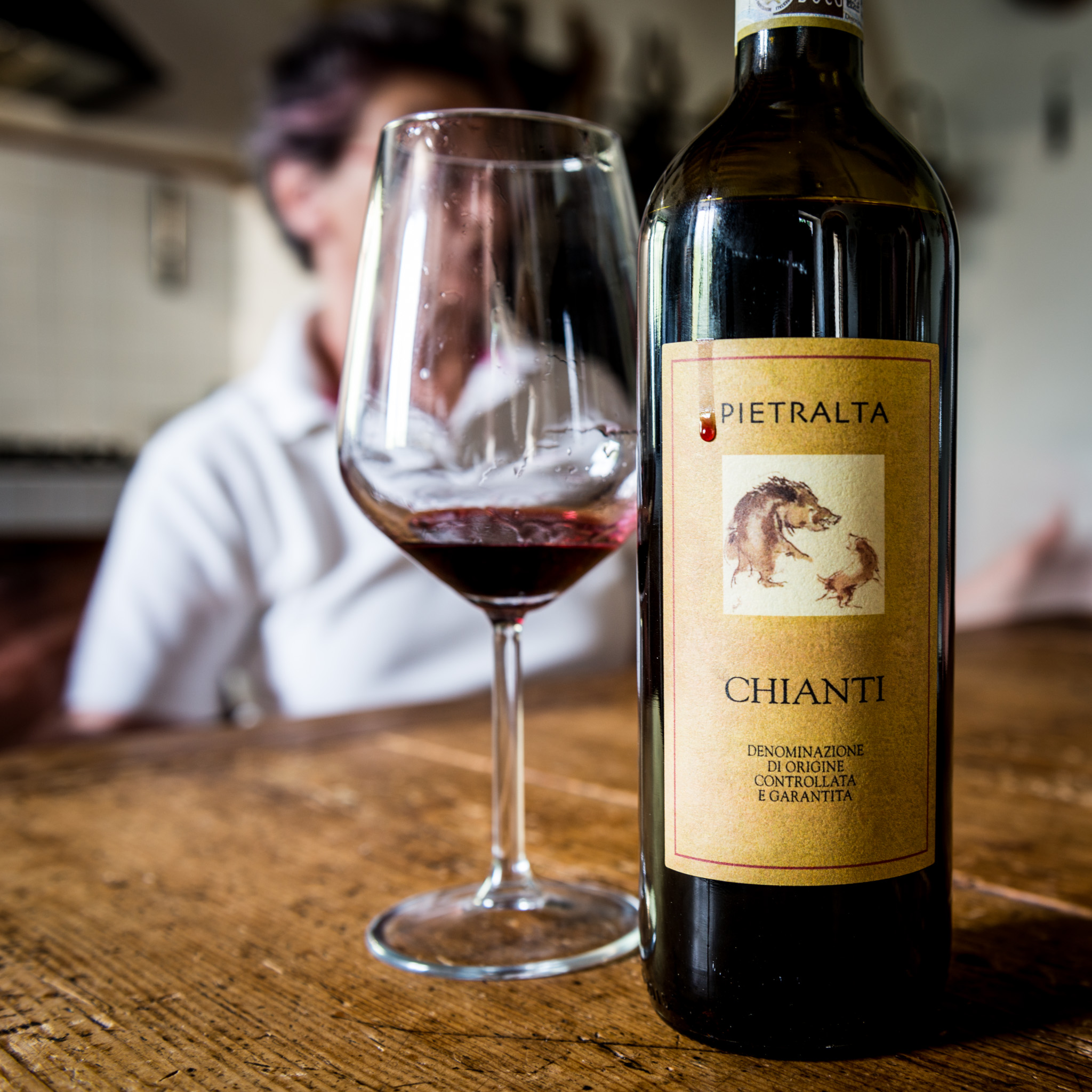
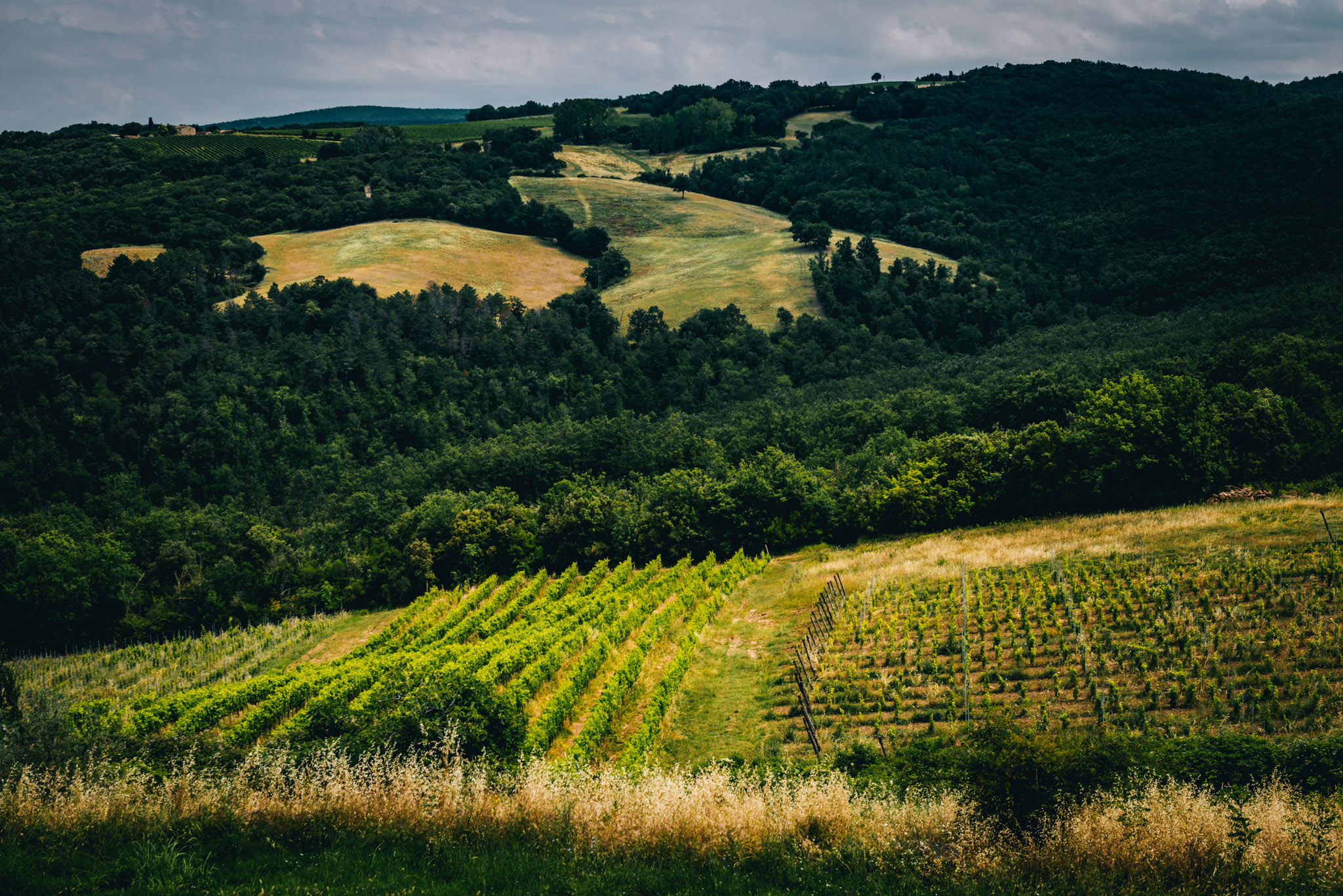
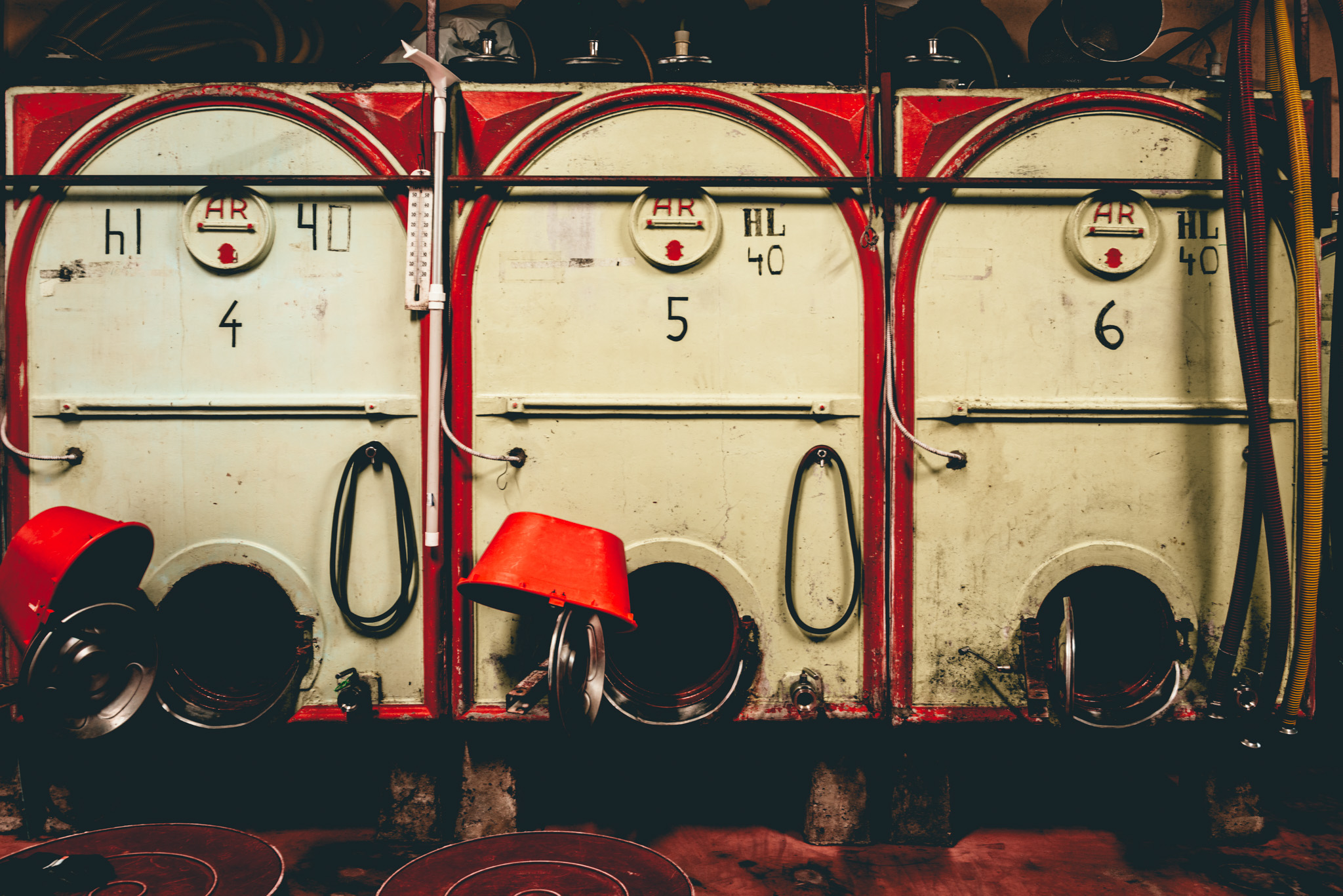
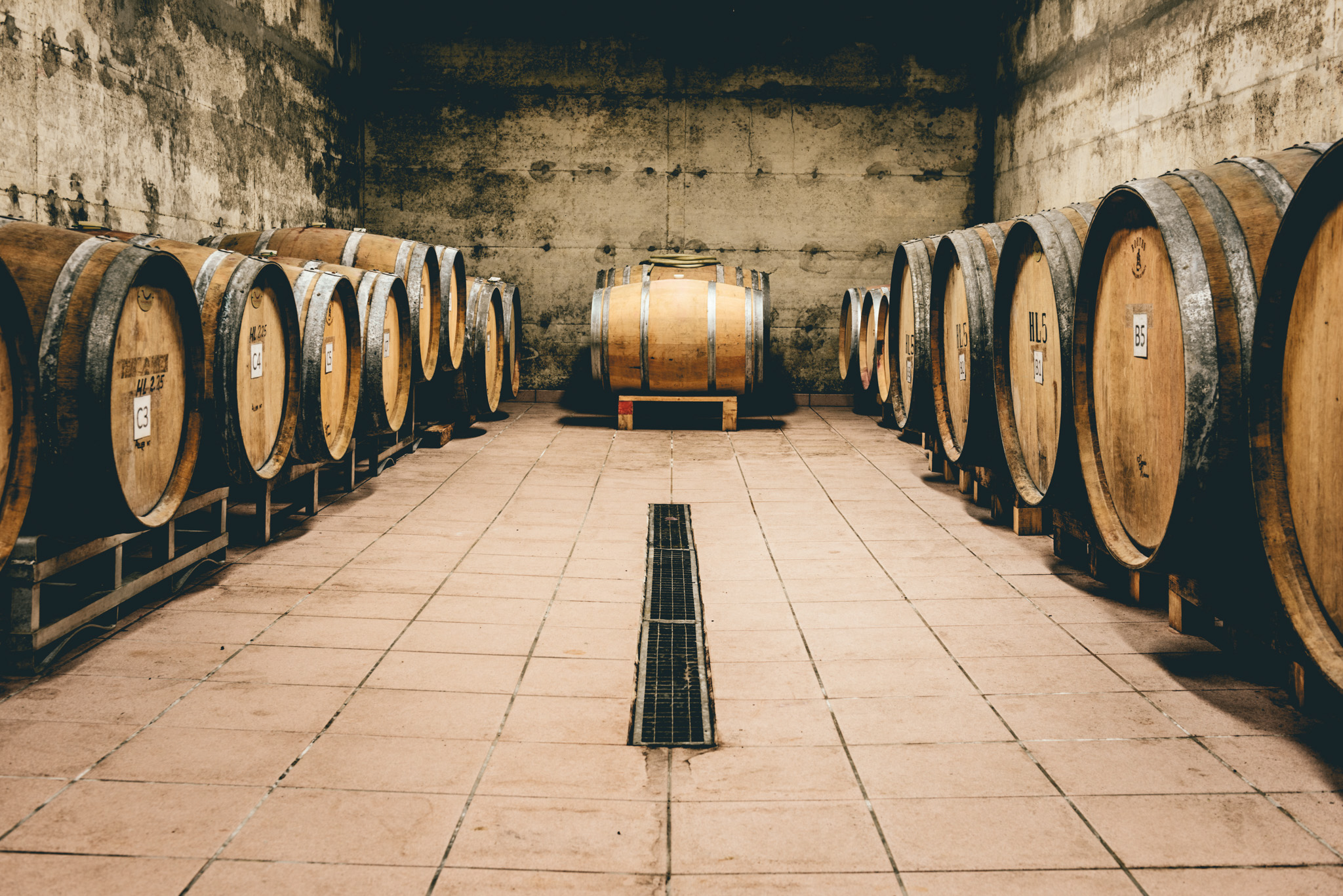
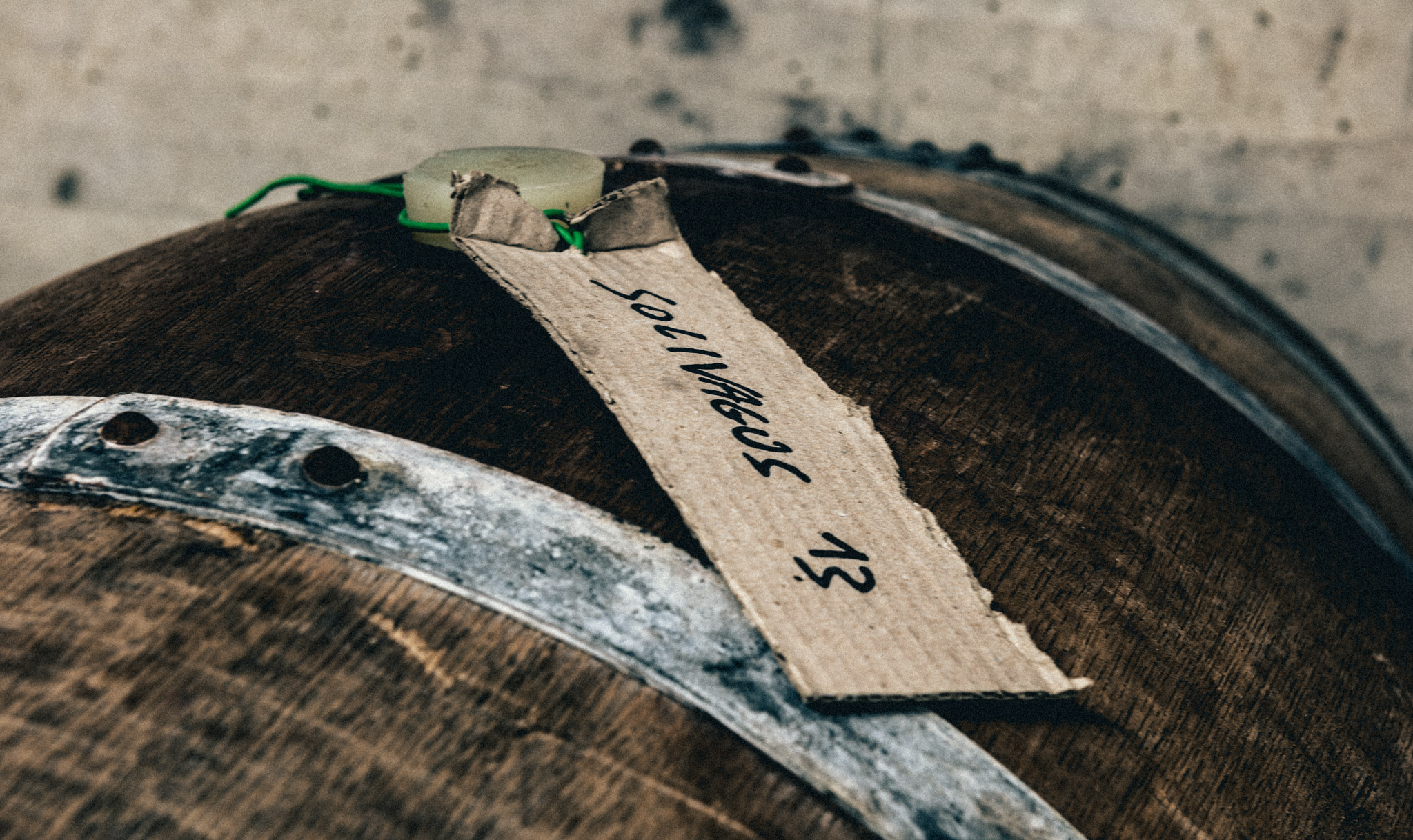



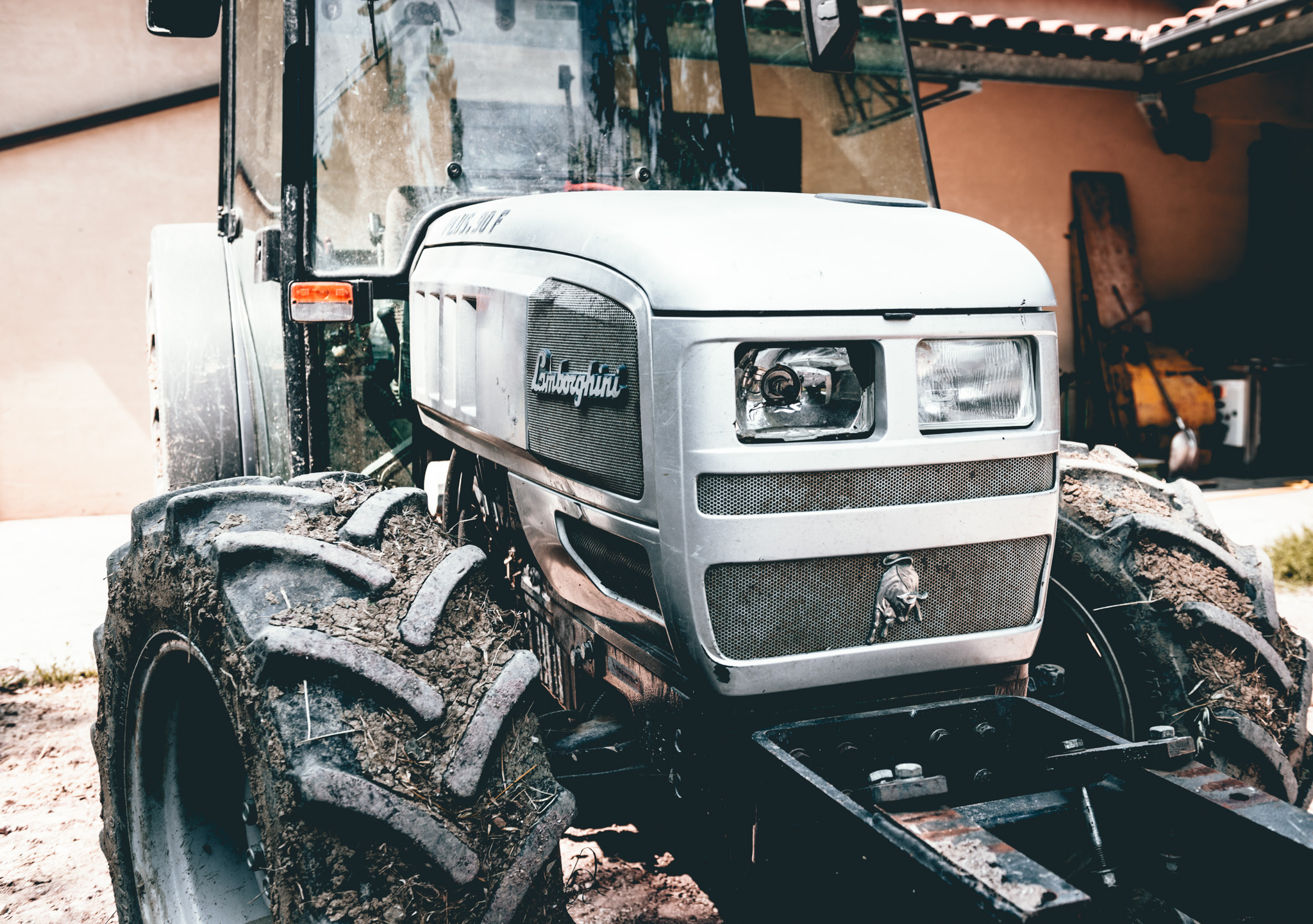
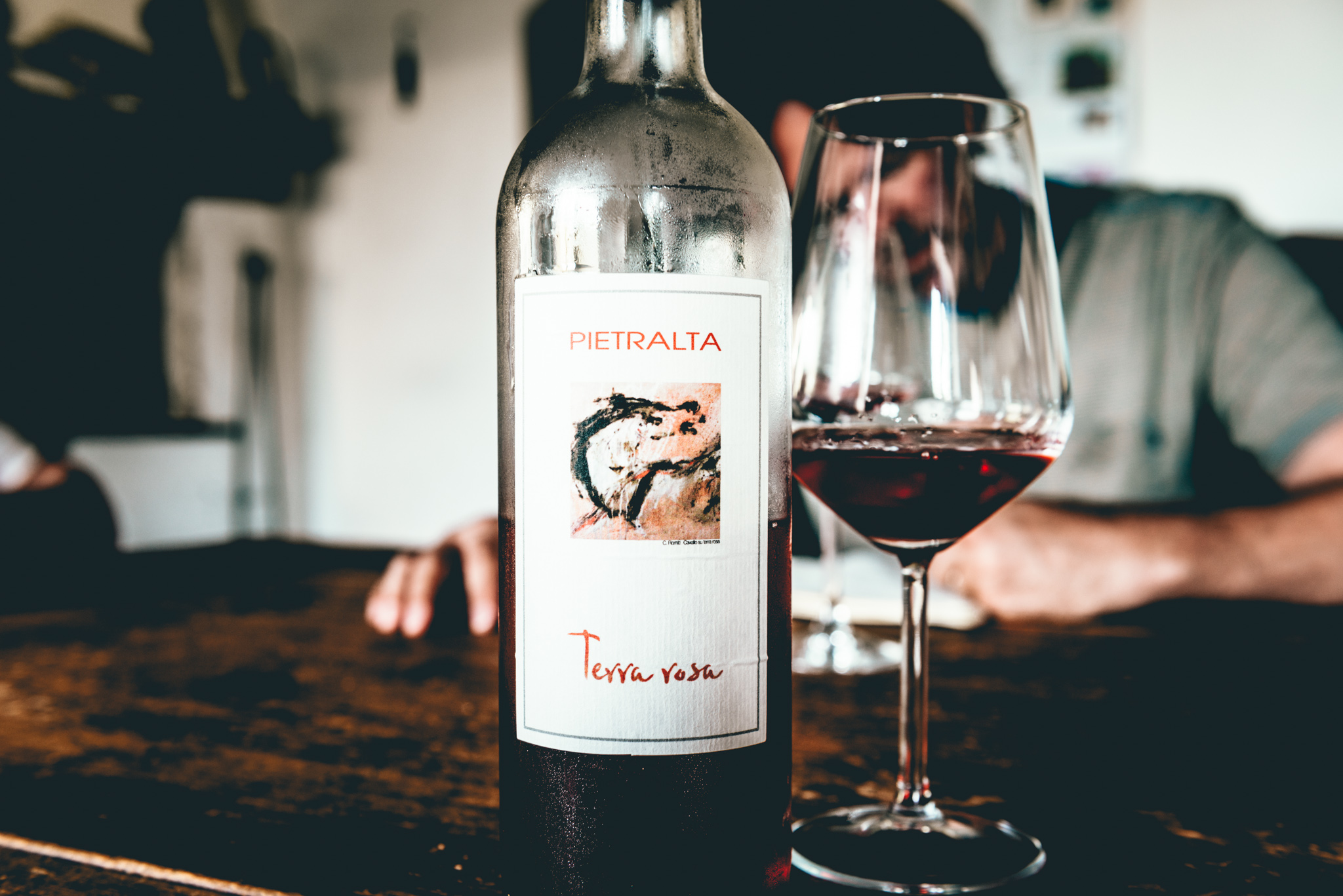
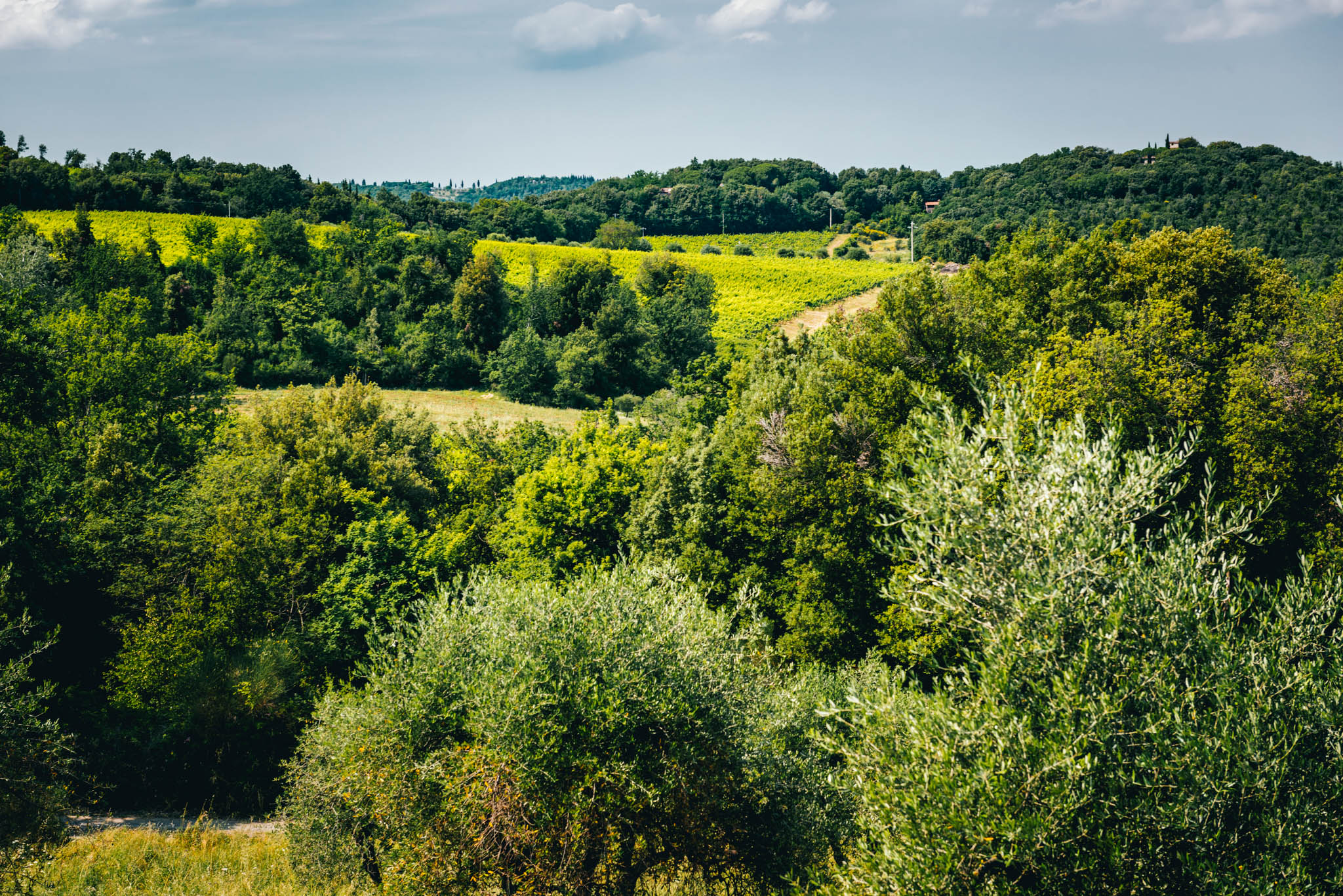

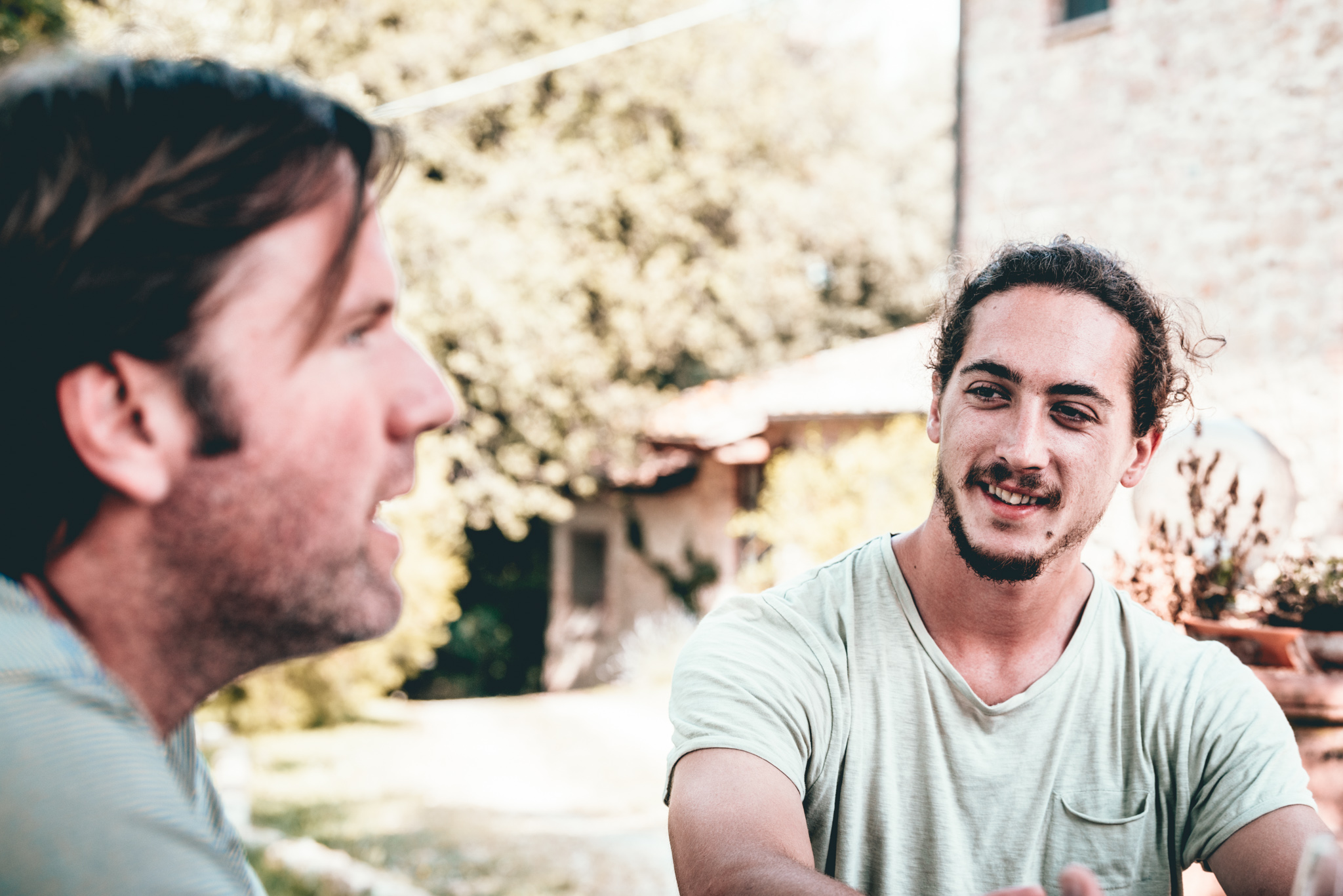
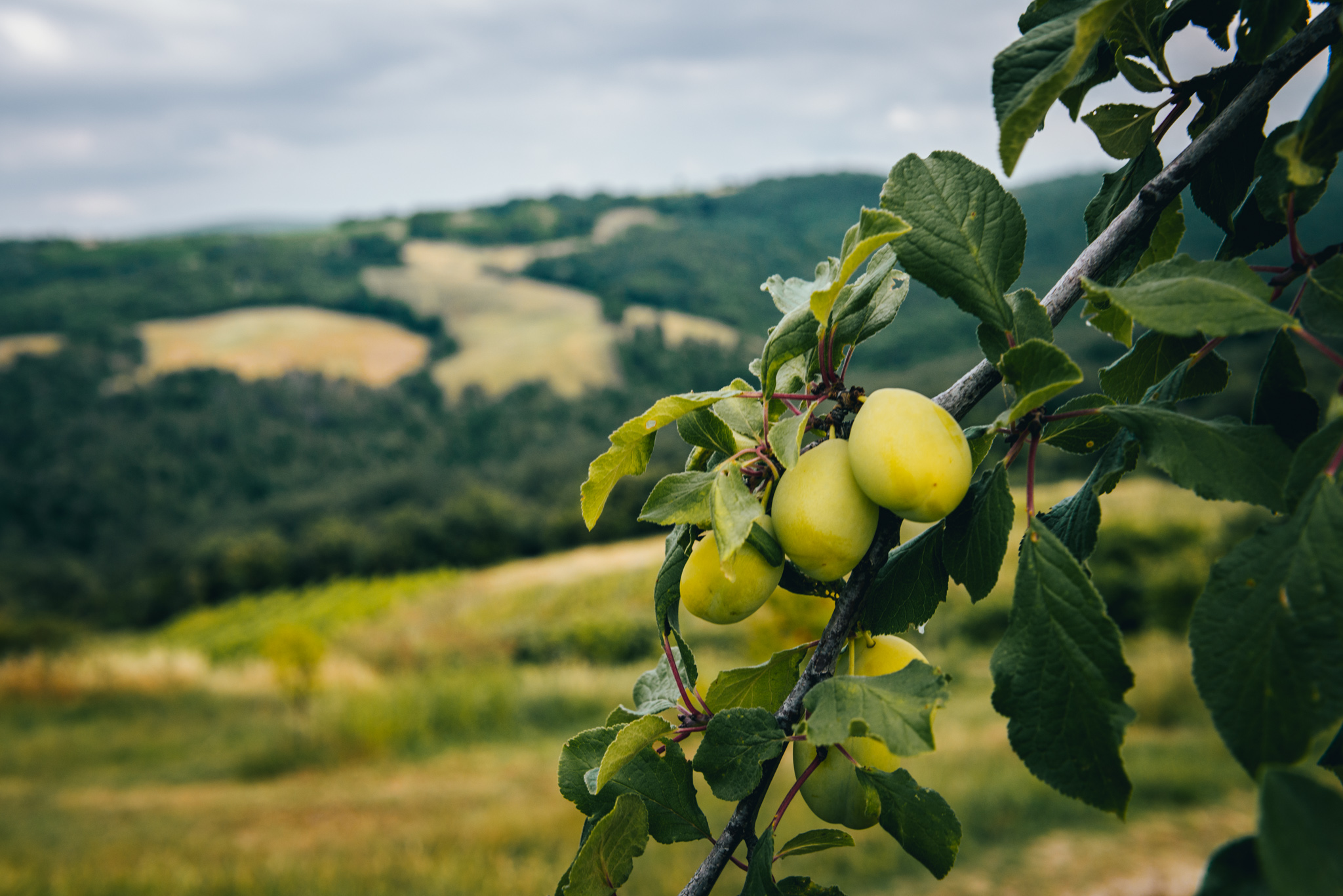


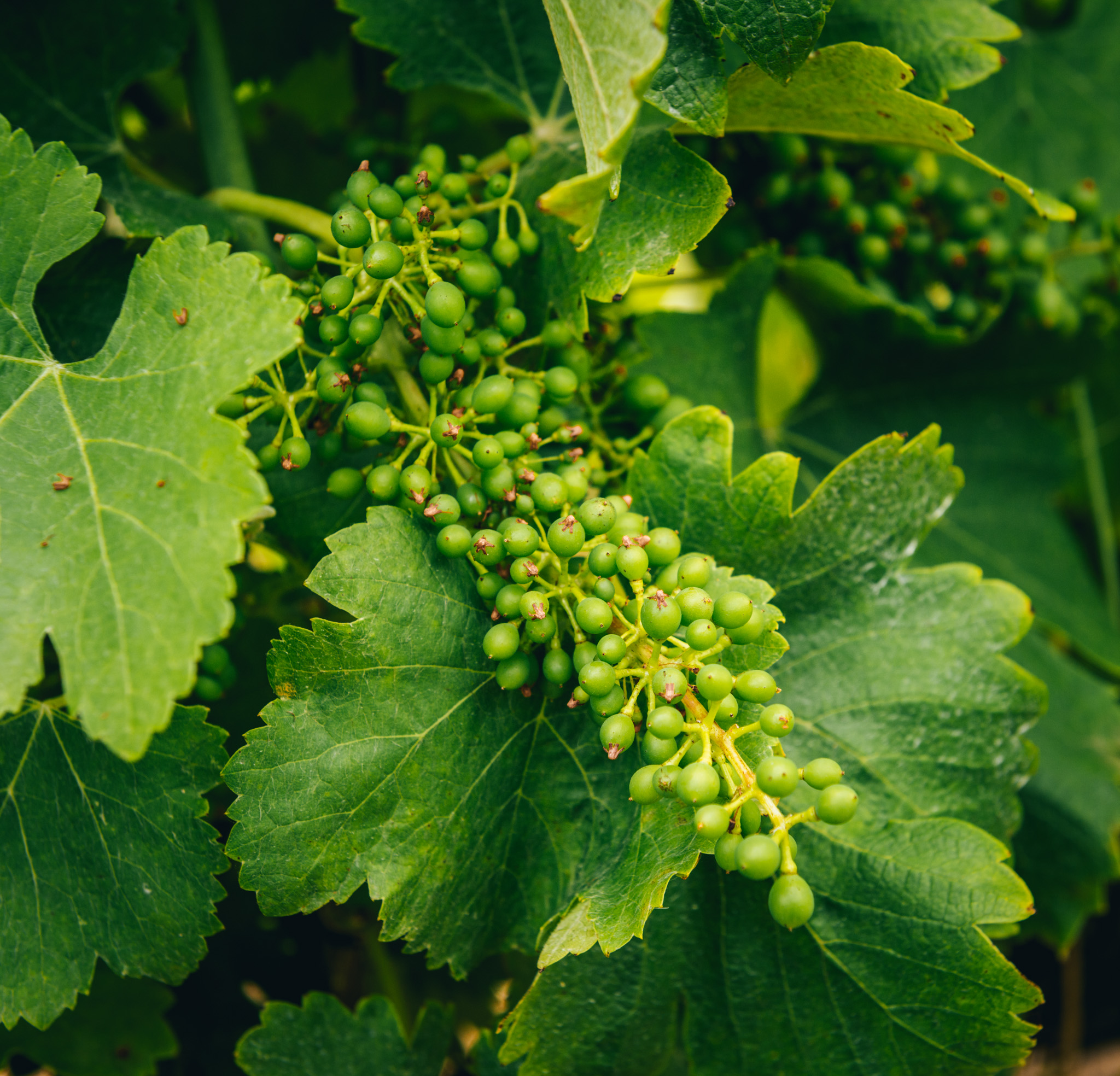
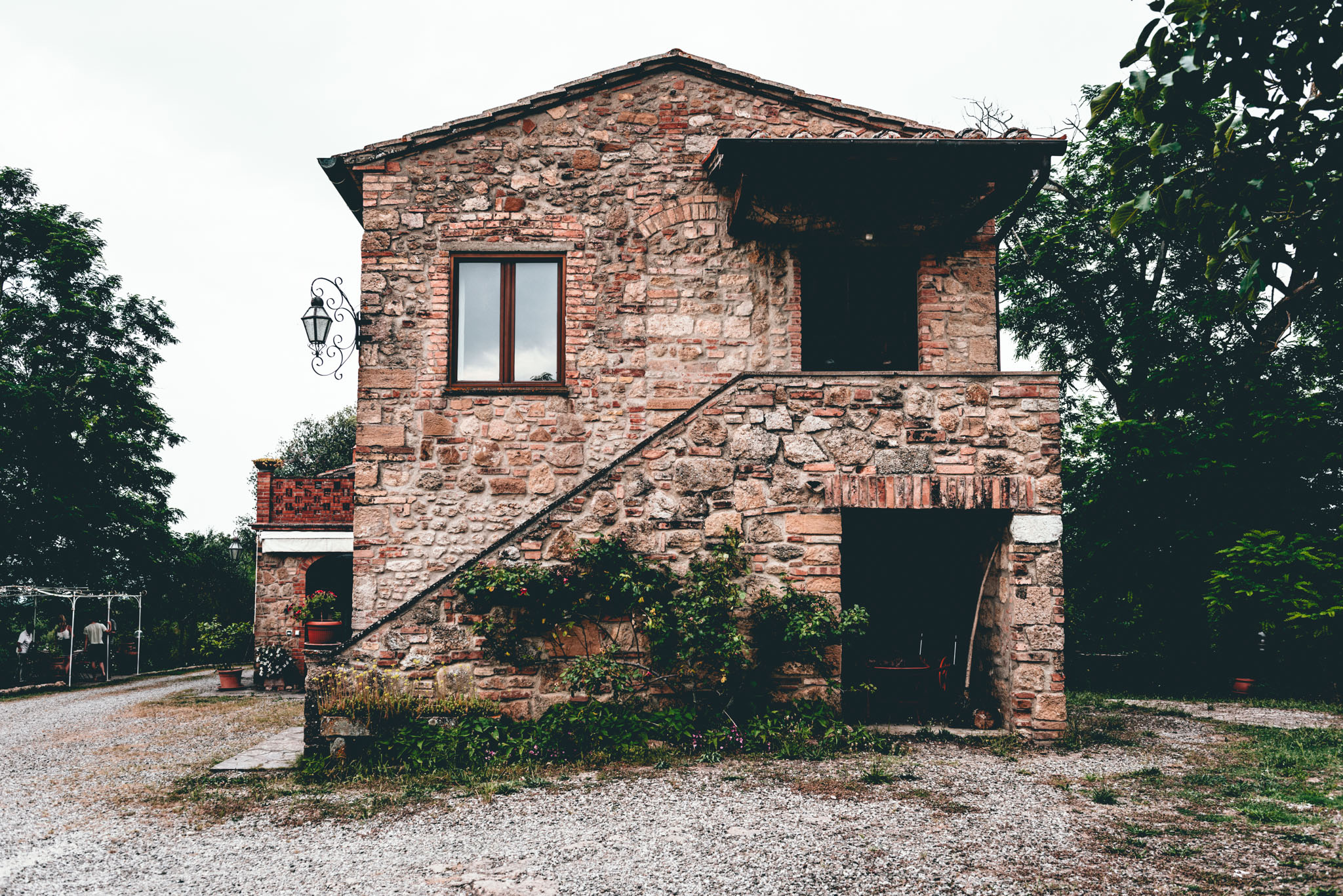
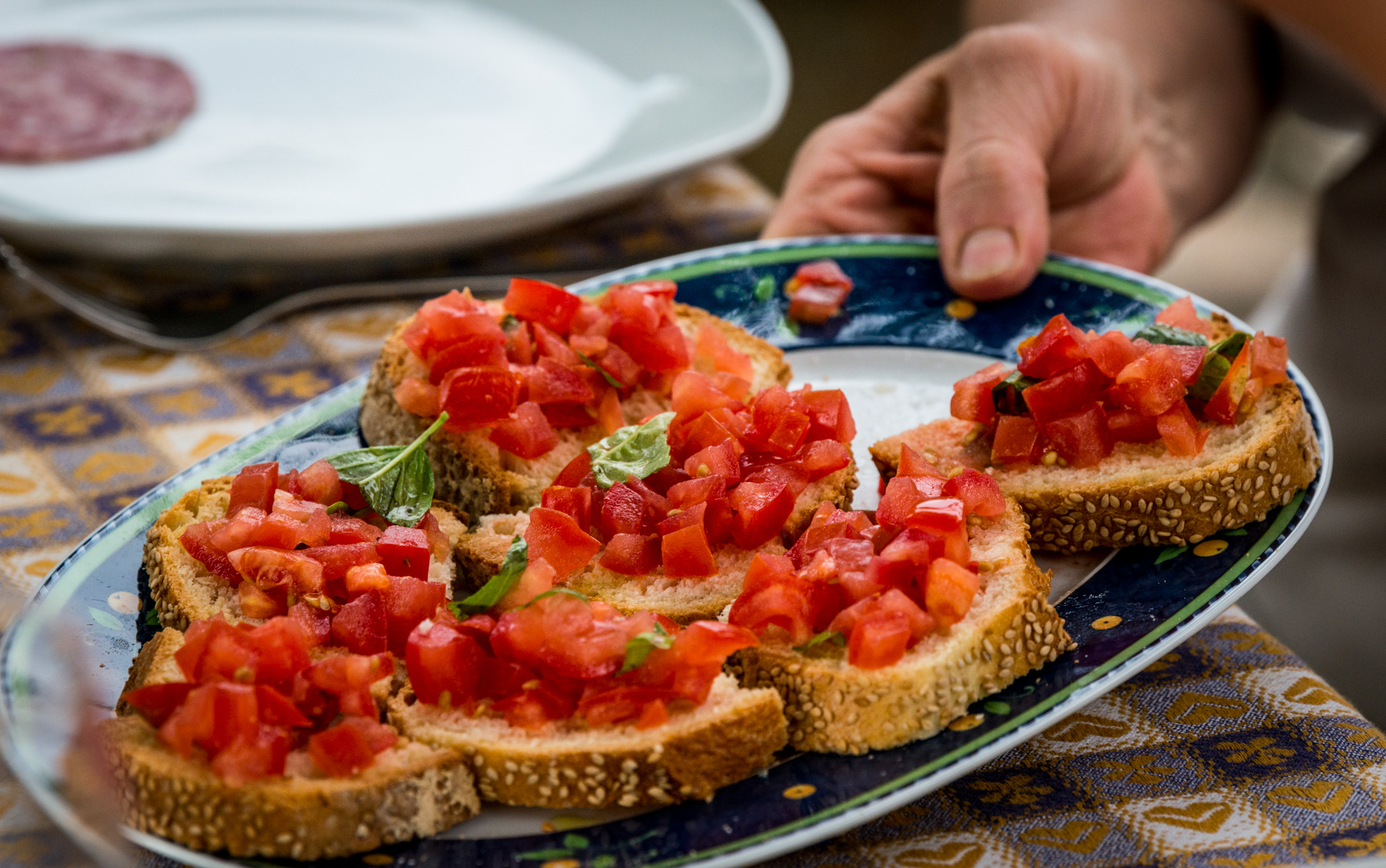

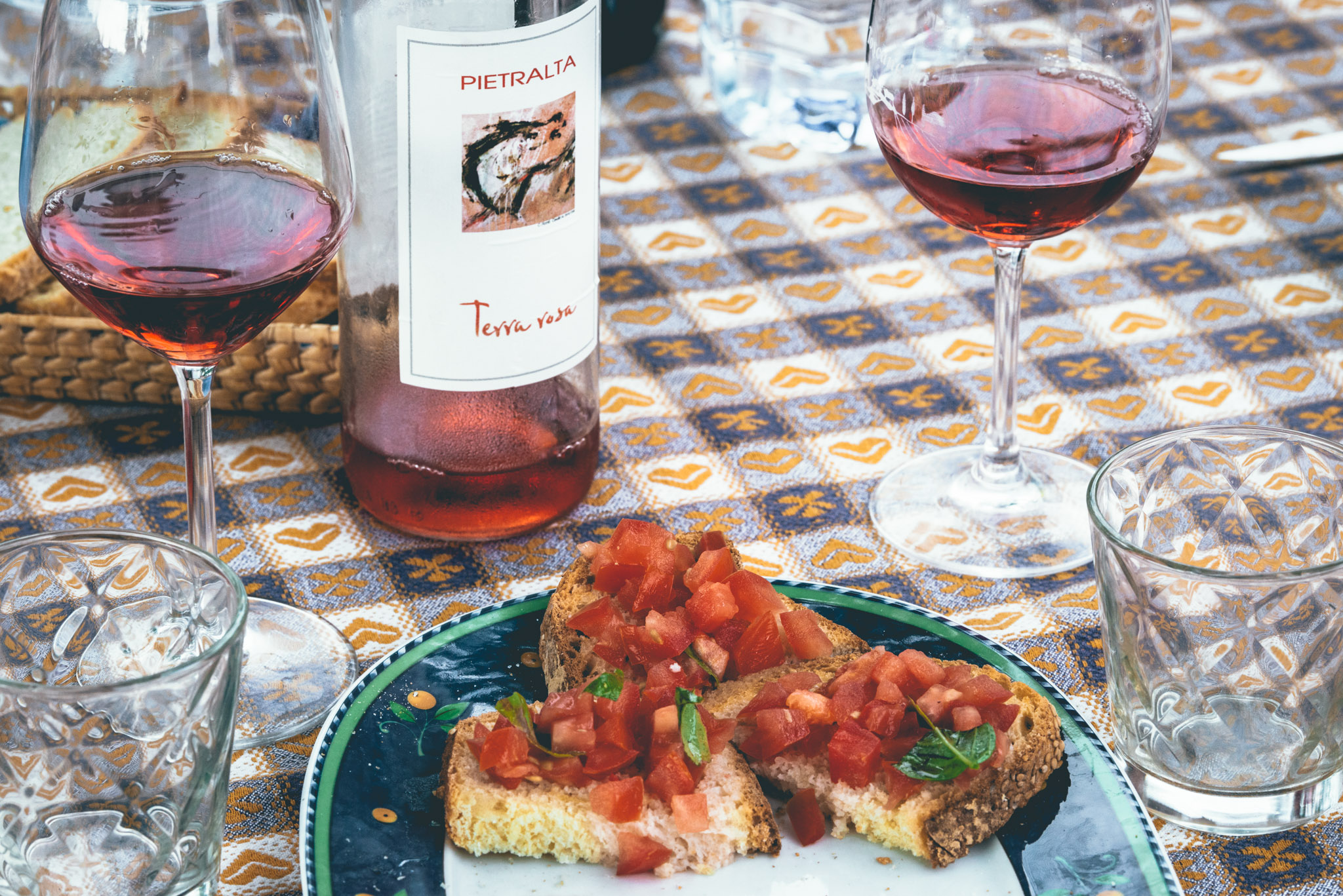
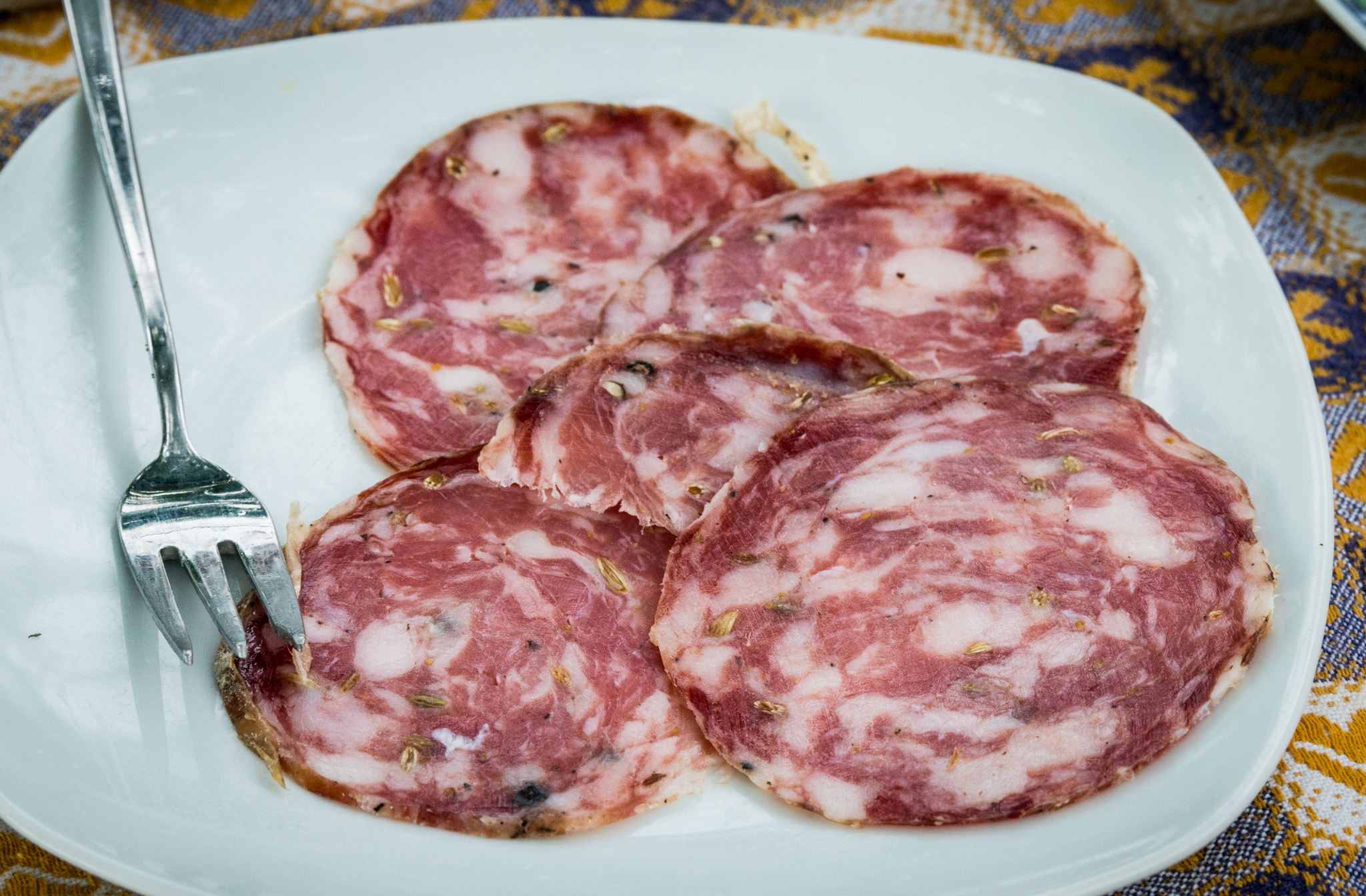
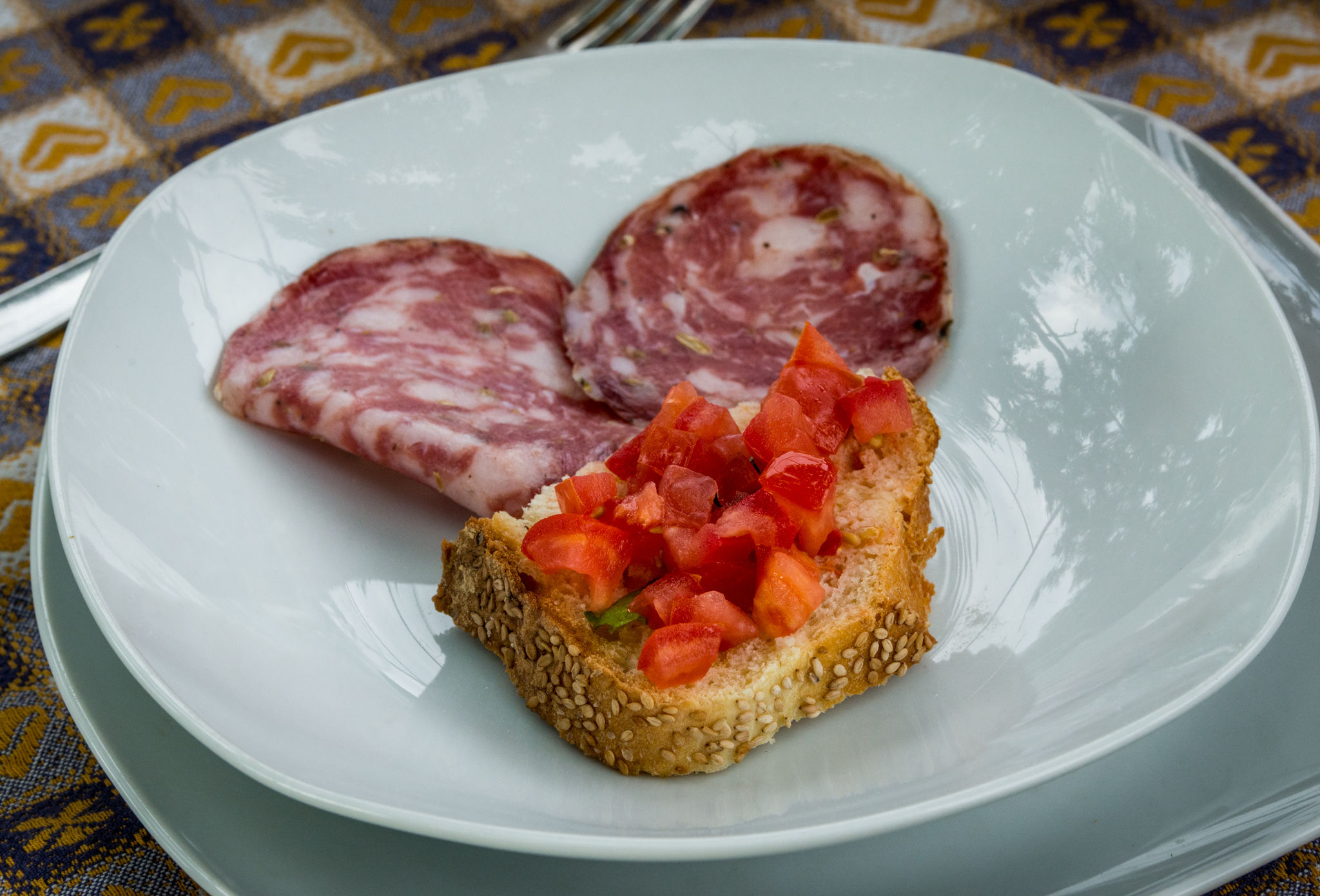
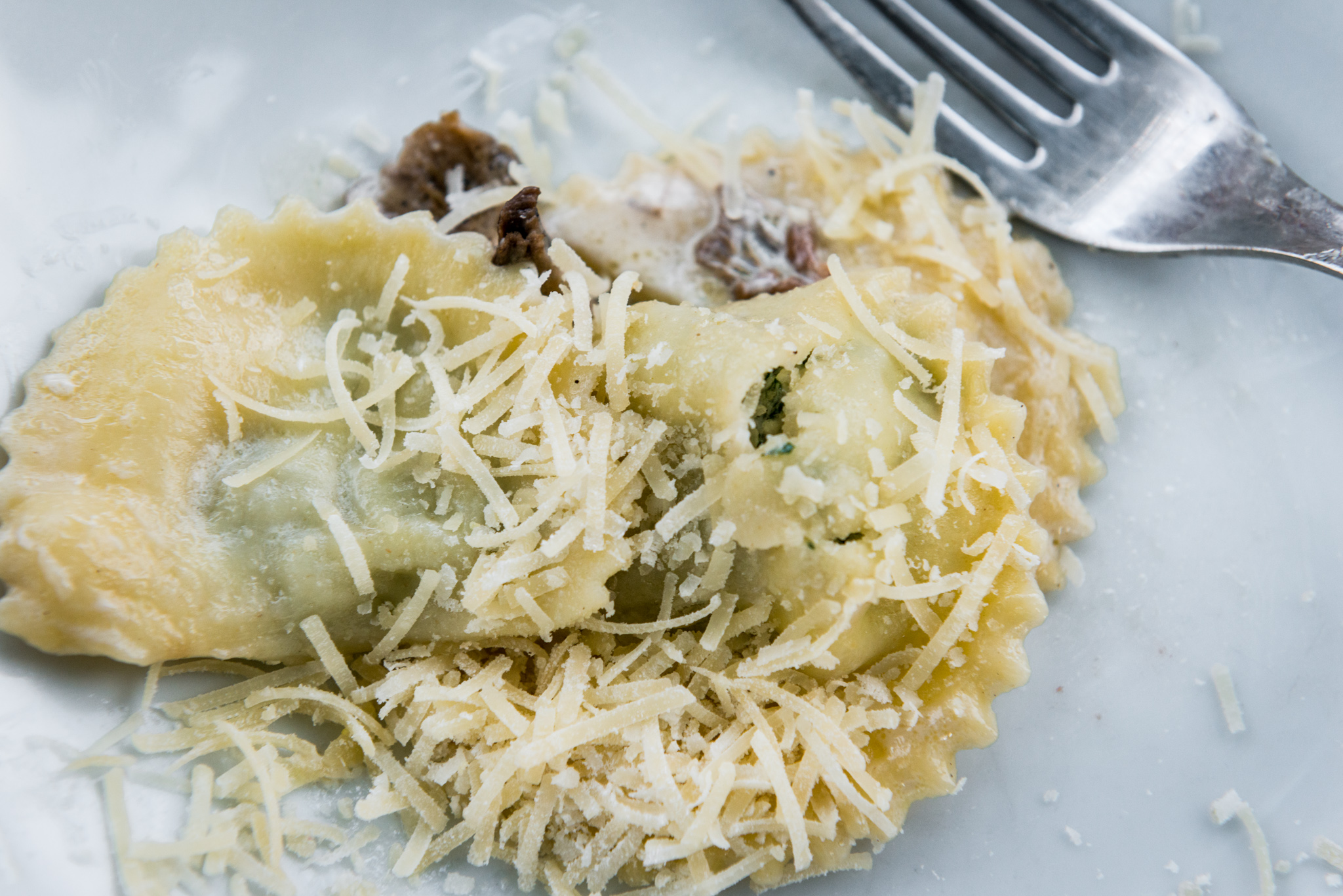
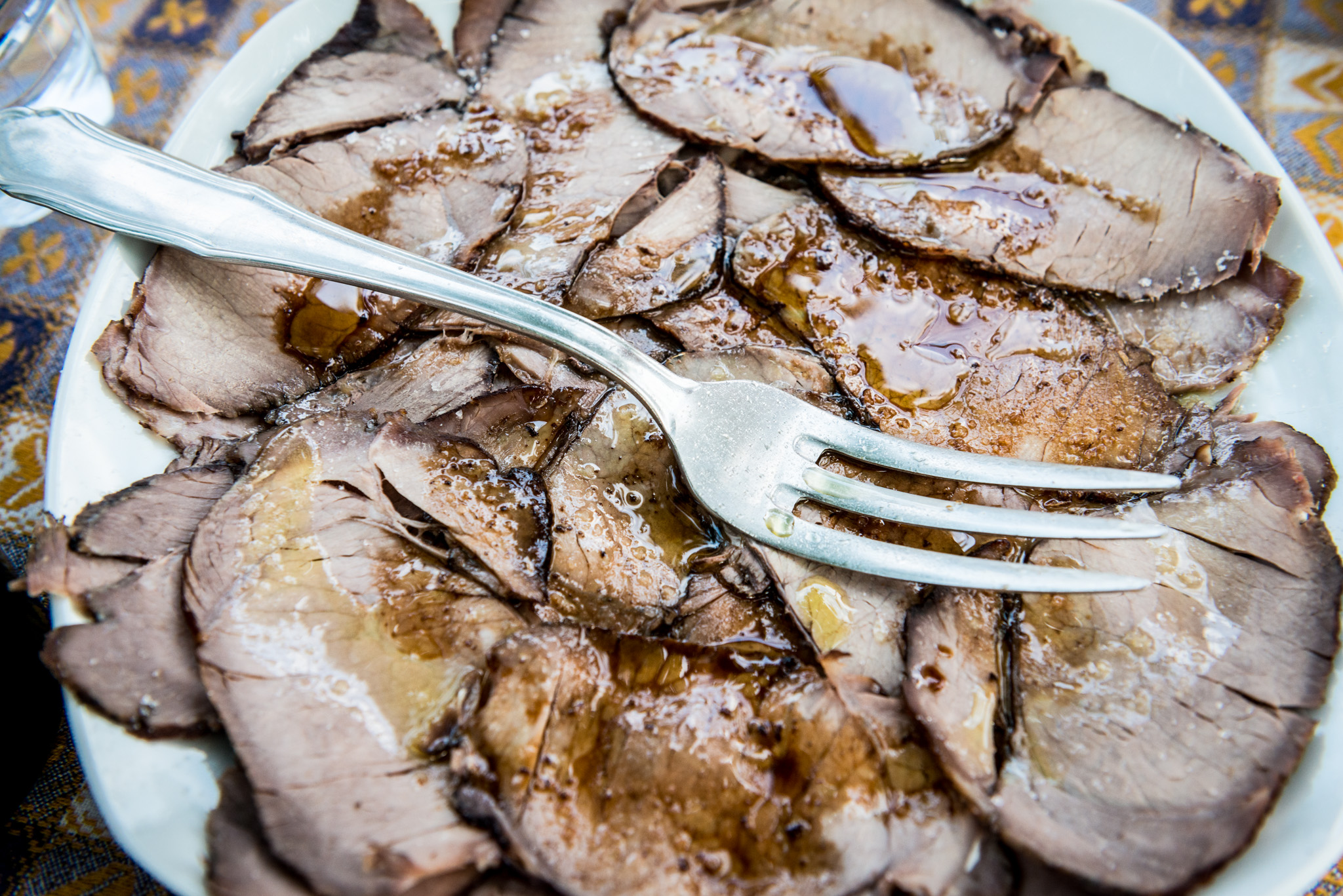
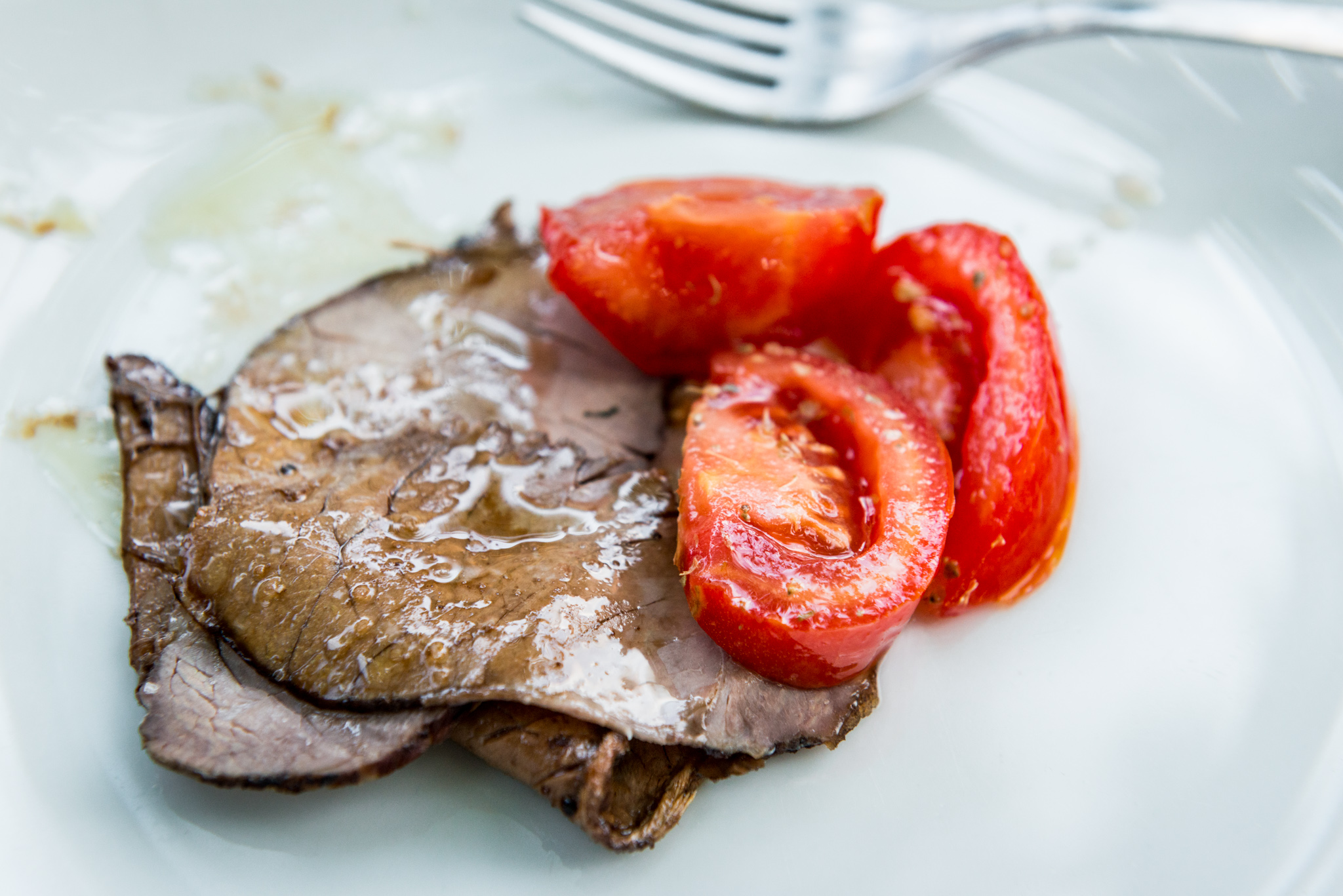


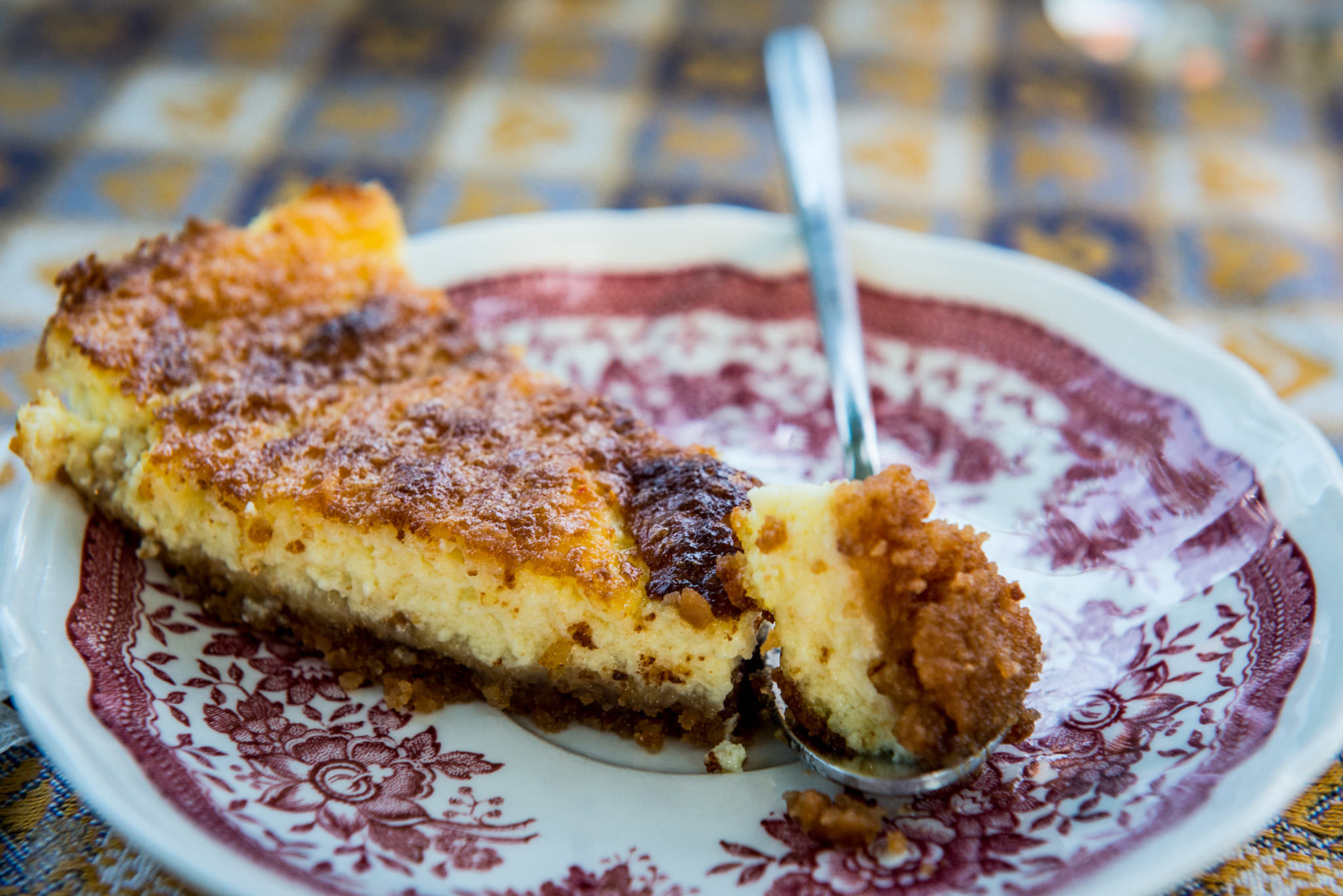
Pietralta
Who: Pierfranca Lattuada and Stefano Lattuada
Where: Gambassi Terme, close to San Gimignano (Tuscany, Italy)
What grapes: Sangiovese, Trebbiano, Malvasia, Canaiolo, Colorino
Key facts: Of 37 hectares total, only 5ha are vineyard and 1ha olive grove; the rest is left to nature. Pietralta have a sustainable, integrated approach to farming. The cellar is in a renovated 13th century building.
Website: https://www.pietralta.com
Instagram: @pietralta
Pietralta “Rabicano” Bianco Toscano IGT
Viticulture: Organic
Soil type: Gallestro and Red Clay-Limestone, Stony
Elevation: 350m - 400m
Grapes: Trebbiano – Malvasia
Method of fermentation: Fermentation happens in temperature controlled small stainless steel tanks. Aged for 6 months in vitrified cement tanks and in bottle for three months before release.
Clean. Bright. Lemon. It’s a blend of Trebbiano Toscano and Malvasia Bianca. Pietralta are lucky to have higher elevation vineyards that suffer less from humidity and frost than many proximate farms. Also, Franca has been at this since 1983, and has learned a thing or two about natural farming during that lifetime of honest labor. — JM
Pietralta ‘Terra Rosa’ Rosato Toscano IGT
Viticulture: Organic
Soil Type: Gallestro and Red Clay-Limestone, Stony
Elevation: 350m - 400m
Grapes: Sangiovese
Method of Fermentation: Obtained from a soft pressing of Sangiovese grapes, and fermented at low temperature in small stainless steel tanks.
Tart strawberry. Fennel. Orange. A key to the success of Franca and Stefan is the amount of land they don’t farm. Most of their 37 hectare property is unplanted woodlands. Biodiversity brings out the best in the areas they do cultivate. This Sangiovese-based rosato was great this spring, with fresh sausage bruschetta and a pasta primavera. — JM
Pietralta Chianti DOCG
Viticulture: Organic
Soil Type: Gallestro and Red Clay-Limestone, Stony
Elevation: 350m - 400m
Grapes: Sangiovese 100%
Method of Fermentation: Maceration on skins for 20 days in a temperature control environment. Aged for 18 months in vitrified concrete tanks and 6 months in bottle before release.
Dark. Woodsy. Pure Sangiovese, certified organic, vinified in cement tank. I can’t extricate this wine from the memory of dining with Franca and Stefan in their kitchen, next to the fireplace. It was raining. Wet dogs crowded the doorway. Franca made a delicious meat stew in a stone pot. Later we visited her friend the painter, and drank pastis. A perfect day. — JM
Pietralta March/April 2022
I’m beginning to understand Franca. And I’m beginning to clear up misconceptions about Pietralta’s wines. Or maybe they are simply changing. In 2011 they were dusty and herbal. Fast forward a dozen vintages and the Chianti is dark, lush, almost brawny. The Chianti Riserva walks a tightrope between harmony and opulence. It used to be boorish and high in alcohol. Finesse is replacing rusticity. Pietralta is ascendant.
But we’ll come back to that after dinner.
I catch Franca smiling more. I think she likes to entertain. In the company of her son she seems happy, even when discussing the challenges of the past few years. We sit around the dinner table in Franca’s 12th century Tuscan farmhouse kitchen and talk about war, drought, the pandemic, economic scarcity: the greatest hits of rural life for time immemorial. But she has a gleam in the eye. We haven’t shared a meal in three years. The fireplace is crackling, warming the room, providing comfort as cold rain falls on the fields surrounding San Gimignano.
Maybe Franca is simply pleased at the quality of the food she prepared for lunch. A fresh sausage bruschetta is unbeatable: indescribably perfect. It is clean, meaty, almost bloody: wholly satisfying. A thing of beauty. Pasta with pristine spring vegetables comes next, then a rich caramel brown cinghiale stew. Shot by a friend, cooked in a volcanic stone bowl.
Franca is a masterful home cook. The wines benefit from being on the same table as her creations. Fumbling with the bottles, I notice Pietralta’s wines bear the European green leaf, denoting organic agriculture. We can’t use this logo (ain’t bureaucracy grand) but it’s nice to see printed recognition of healthy vineyard practices. The estate has been organic since 1983, when Franca decided to abandon the drab suburbs surrounding Milan for a life in agriculture farther south.
Stefano is calm. Relaxed, even. I think the rain (after 100 days of drought) may soothe the nerves of local grape and olive growers. When a person does hard viticultural labor day in, day out, a rain day can force a necessary pause. Like his mother, Stefan smiles a lot. He’s good at telling stories: humor, lots of eye contact. He seems totally comfortable in his own skin.
The change I mentioned in the wines is a marker of his growing influence in the vineyard and cellar. Since Stefano finished school and started working on the property full-time, the number of memorably good wines made at this tiny address has spiked. While still in his 20’s, I see the confidence and sure-handedness of his work etched into recent vintages. It bodes well.
Carlo Romiti has improved the labels as well. It’s another reason why I’m glad I visited. On the computer, the new labels looked a mess. In real life they are great! With a quick phone call, Franca arranged a visit to the studio of Gambassi Terme’s most celebrated painter of the natural world. Carlo uses pigments from the earth to create his (often quite expansive) scenes of deer, boar, dog, and horse. They are filled with motion, energy, and passion. I suspect this is a decent enough description for Romiti as well. He looks every bit the wizened country painter, inhabiting a magical woodland grove far down an unfindable gravel path, behind a gate, protected and accompanied by large, loyal hunting dogs. We share an anise distillate. He puts on a show. Massive rolls of canvas reveal the country life of Tuscany, according to Carlo. It’s a treat. Antlers are everywhere. The antechamber is filled with saddles. Jars of colorful dirt (one smuggled back from China by Franca!) rise on shelves to the ceiling. He asks If I want to see a roll of paintings of naked ladies. I do not.
The wines:
The 2021 Pietralta Bianco IGT Toscana (90%Trebbiano/10%Malvasia) now sports a quite regal horse on the front label. The wine is pleasant: clean and bright. It’s perfect with goat cheese that Franca rolled in paprika, and pistachios.
The 2021 Rosato IGT Toscana (100% Sangiovese) reminds me of why I fell for a vintage of this bottling a couple of years back. It is lively, delicate, with strawberry and orange rind in the foreground. Pasta with English spring peas, a mixed salad with watercress and raw wild asparagus, red shrimp: pick your fresh fare. This wine is versatile.
The 2020 Chianti DOCG is dense, dark, and woodsy. Forest floor, not oak. The wine ages in cement. It’s impressive stuff. You won’t find many Sangioveses in this glass-pourable, stackable price range with nearly the intensity and concentration that Franca and Stefano have mustered for this release.
I’m unlikely to import the 2015 Chianti Riserva, though that decision has nothing to do with the quality of the wine. Our portfolio bulges with fabulous Chianti Riservas. We can’t have everything. Want some bottles? Book a trip to Tuscany. You can even stay with Franca and Stefano. Their agriturismo is about to open for the season. There’s a pool! If you threaten to buy a painting, they might lead you to Carlo Romiti. Then enjoy a glass of this wine, in its correct place.
Change is afoot. I like it. Keeps us alive. Stefano has a new line of natural wines, bottled with a friend from Pisa. The labels are carnivalesque. I’m not ready to leap down that rabbit hole. Maybe in 2023. We need reasons to return. I’m beyond satisfied with the new wines at Pietralta. This summer I’ll have to make a small Tuscan feast in the office, to celebrate their arrival. North Carolina has wild boar, right?
I drove through San Gimignano for the first time because of Pietralta. It was pretty nice! Sure, tourists were there, but I can see the appeal of a longer visit. Pietralta is close, in the country, nominally in a commune called Gambassi Terme but actually all alone, a cluster of small buildings (and a pool: we are in Tuscany) that are sited quite a distance down a choppy, grated dirt and gravel road. Olive trees are everywhere, and as you approach the cellar and tasting room a significant chunk of the estate’s vines are planted along your path.
“Our wine must be natural.” These statements make me smile. Pierfranca Lattuada continued, “Our oenologist also agrees not to manipulate.”
Pietralta spans 37 hectares, but only six hectares are planted. Olive trees are the other significant agricultural endeavor, but also plenty of space is left forested, full of the wild boar that grace their label. On such a remote-feeling farm it is not surprising that solitude is a preoccupation of Lattuada’s.
“Solivagus, our top award-winning wine, is named after when an animal decides to go off into the woods, alone.” To prepare itself for the next stage of existence.
Pierfranca Lattuada is energetic and very much in charge at Pietralta, but a clear generational transition has been charted. Her twenty-something son was working the vines with one other laborer when I arrived, a sign of a vital, healthy relationship between family and land in the decades ahead. Of all the estates in Tuscany that we represent, Pietralta is the most filled with promise. Today their wines are direct, enjoyable (try not to polish off a bottle of the bianco Toscana on a hot NC afternoon) and capture Gambassi Terme’s more southern terroir with absolute fidelity. There is real potential. You can feel the upward arc.
Lattuada’s son recently completed a two year sommelier’s program at a local university. I sense the application of his keen palate in the current vintages, and am eager to see what this tiny cellar delivers to us in the decades ahead.



